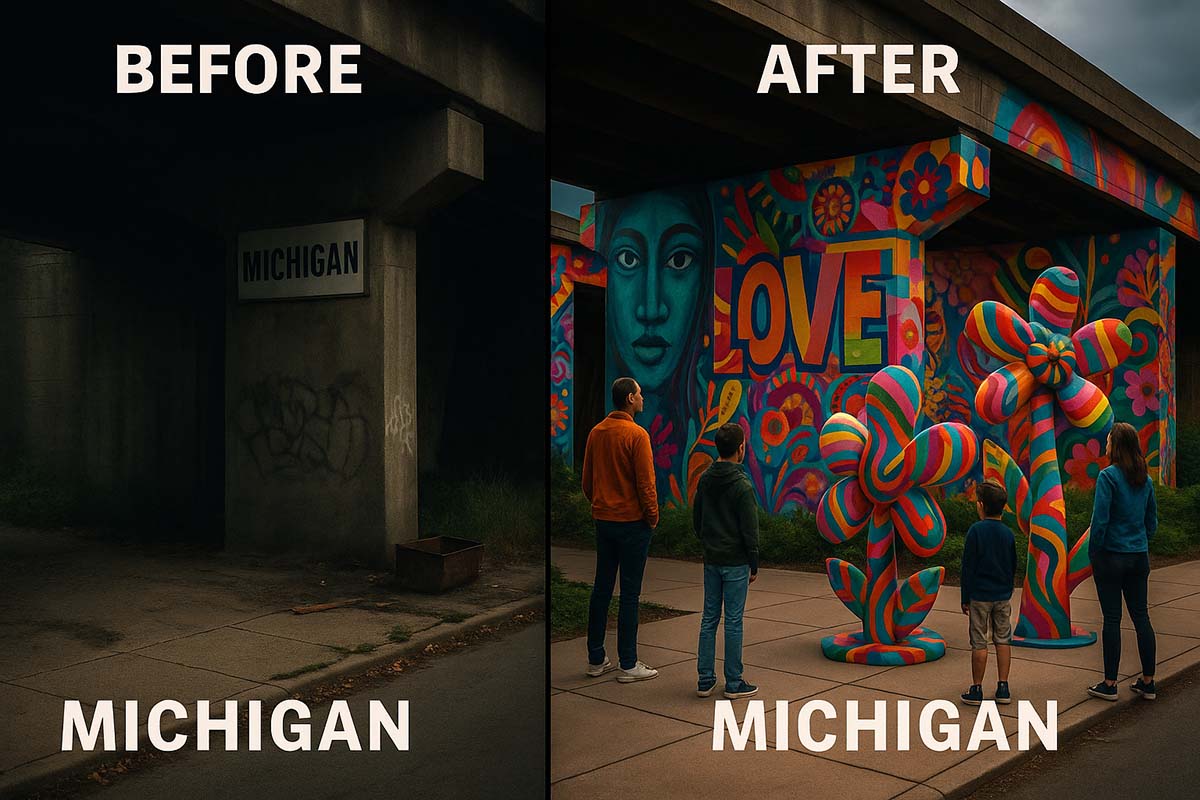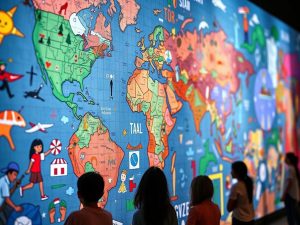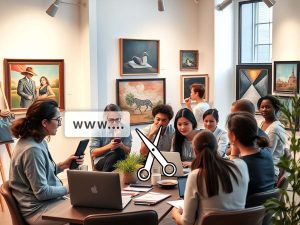
Young Artists Transform Public Spaces in Michigan
Street art begins quietly. It breathes life into walls and walkways. When a colorful mural appears in Michigan, it’s not just paint—it’s a story told by the community and shaped by the hands of young creatives. This kind of work resonates deeply with anyone who values creativity, especially content creators, small business owners, and social media advocates supporting local talent.
Michigan’s young artists are reclaiming public walls, plazas, and bridges as open galleries. – From Detroit to Grand Rapids, stories of hope and drive are emerging. – These efforts are influencing not only local neighborhoods but also international views on public art.
The Role of Art in Public Spaces
Art in shared spaces does more than decorate. It creates connection. Families walking through the neighborhood, students passing by on their way home—each one takes away a new understanding of where they live. Michigan’s local government has been helping artists through “Art in Public Places,” giving space and support to youth-driven projects.
In Detroit, student artists were given access to paint murals on abandoned buildings. This helped reduce graffiti and brought pride back into the community. Meanwhile, a group of young metal sculptors turned a corner of Grand Rapids into an open-air gallery. These examples show how creativity can bring people together.
Rising Artists and Their Journey
Many young people first find their passion through school programs or summer workshops. From college campuses to local youth centers, workshops in mural painting, digital design, and mixed media installations are often accessible and affordable.
Take Maya from Ann Arbor. At 19, she started by sketching in a park. With support from a local art group, she was later invited to paint an old bridge—now a regular stop for visitors. Her mural even earned mention in a national feature about American street art. “I never thought my sketch would end up in something that big,” she shared.
Creative Tools and Styles
Artists use a mix of materials. Spray paint and acrylic are the most common, but others turn to recycled metal, wood, or even digital tools. Mural sprays offer speed and flexibility, while brush-based acrylic adds texture and detail. Some artists also use light projection to build immersive displays at night.
Themes often focus on nature, history, and unity. In Kalamazoo, a group repurposed broken bicycles to create a sculpture about urban transportation. By mixing old metal parts with LED lights, they built an installation that moves with the eye.
How Communities Respond
Once a piece is complete, communities usually hold public events to share the work. These gatherings draw families, city officials, and reporters. In Lansing, foot traffic jumped by 30% in the Downtown Arts District after three major murals were introduced in a single year.
Online reactions are strong as well. The hashtag #MichiganStreetArt holds thousands of photos from both local and international fans. These visuals help position Michigan alongside places like Berlin or São Paulo in conversations about vibrant public artwork.
Reaching Beyond Borders
Some initiatives stretch past local borders. Youth delegations have taken part in overseas art exchanges. One example was a mural collaboration in Copenhagen that focused on urban gardening. Young artists from Michigan teamed up with Danish creatives to design a shared piece for a public garden in Aarhus.
Cities like London and Tokyo have acknowledged Michigan’s role in North American public art. What sets Michigan apart is the involvement of youth. Their work often blends cultural identity with present-day issues like the environment and social equality.
Boost to Local Business
Public art can lift a city’s economy. Cafés, galleries, and small stores often appear near these creative hubs. Tourists don’t just take pictures—they walk through neighborhoods and spend money while engaging with interactive art walks. In Flint, a small gallery café saw higher sales after hosting a mural by a local youth artist.
It also opens up freelance jobs. Through grants from the Michigan Council for Arts and Cultural Affairs, artists receive funds for supplies and are encouraged to pursue art professionally. This opportunity helps them turn passion into full-time careers.
Education and Training
Schools and universities are central to these efforts. Some offer courses focused on urban design and collaborative art. Students discuss topics like copyright and working with city permits while learning how to manage real-world projects.
At the University of Michigan, professors run programs that include lessons in community outreach and planning. Each semester, students are assigned group projects where they design and execute large-scale installations. They learn how to gather permissions, organize stakeholders, and bring their work to life in public view.
Planning for the Future
City archives are beginning to include street art. These collections, housed in museums or digital libraries, preserve every step from concept sketch to final result. In Detroit, a permanent exhibit highlights the city’s rich street art history.
The Sault Area Arts Council also maintains an online catalog. It lists young artists and their work, allowing other communities to follow the progress and participate through shared documentation.
Challenges and Solutions
Creating art in public spaces is not without its issues. Vandalism, disagreements with residents, and permit conflicts are some of the problems faced. Local art groups often address these by holding public forums or conducting surveys. Ann Arbor, for instance, hosted a town hall before beginning a mural project to ensure community support.
Maintenance is another concern. Paint fades, and weather takes its toll. That’s where local sponsors come in. Businesses sometimes contribute funds for upkeep to help preserve installations for years.
Suggestions for Other Cities
For cities in Europe, Asia, or Latin America hoping to replicate what Michigan has done, the following steps may help:
- Start with small projects through a community center.
- Work closely with local government to secure permits early.
- Include residents from the planning phase until completion.
- Choose materials that last through time and climate changes.
Each city has its own needs, but the goal remains the same: bring people together and enrich shared spaces through creativity.
Lasting Impact
Youth artists in Michigan are doing more than adding color to walls. They’re building connection through paint, sculpture, and light. Their work highlights shared hopes and celebrates cultural identity. By turning bridges and alleys into open-air galleries, they are inspiring people across the globe. What began as small sketches has become a powerful reflection of community life—alive, expressive, and built with care.

